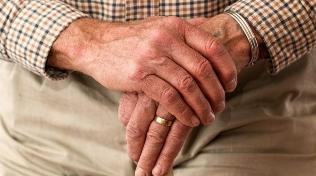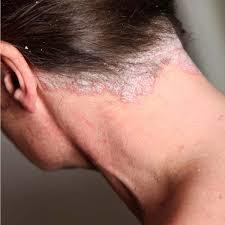A characteristic symptom of psoriasis is the preferred location, papules, symmetrically on the skin, the extensor surface of the hands and feet, and also the scalp.

Despite the fact that a leading role in the development of psoriasis is the presence of a genetic predisposition (psoriasis is a disease, a disease transmitted by inheritance), the push to the birth of the disease can serve a large number of exo-and endogenous factors (the development of psoriasis on the nervous system, on a background of the alterations in endocrine, after infectious diseases, etc.).
The etiological factors of the development of the disease
The disease has no sex predisposition, so that the frequency of occurrence of psoriasis in men and women, is no different. The 12 percent of patients with the disease for the first time and develops up to ten years. Up to twenty years, the psoriasis develops into forty-six percent of patients, and up to thirty years – sixty percent.
In the development of psoriasis stress two bands of peak:
- twenty-seven and fifty-four years for men;
- fifteen and fifty-four years for women.
The causes of psoriasis in adults
The exact cause of psoriasis is unknown. Important role in the pathogenesis of the disease is part of a genetic predisposition. It also plays a significant role in the appearance immunological instability, disorders the lipid bilayers and the presence of a patient foci of chronic infection.
In favour of the theory of genetic (hereditary the causes of psoriasis) are demonstrated by the fact that the disease is always, not only of the patient but also his relatives.
Reveal a predisposition to psoriasis can be during the course of a classic for the analysis of the genome. In these patients may be celebrated the ten loci of the chromosomes responsible for the hereditary predisposition to the disease (PSORS 1 to 9, and HLA – B27, 17, etc.).
The main gene responsible for the maximum expressed the innate predisposition to develop the disease, believe PSORS1.
In addition, in the pathogenesis of psoriasis play an important role in genetically predisposed disorders of the metabolism of carbohydrates and lipids. The majority of patients with psoriasis reveal heavy hyperlipidemia and metabolic syndrome. In this regard, in patients with psoriasis observed a high risk of heavy early atherosclerosis and cardiovascular diseases.
In addition hyperlipidemia, observes the disorder in the metabolism SCREEN (fatty acids), increased production of free radicals, the compounds involved in keratinization of the epidermis, etc.
When the research psoriatic platelets, revealed a large content of oxidation of low-density lipoprotein.
The main indicators that allow to assess the proliferation of keratinocytes in an outbreak of psoriasis, are the protein Ki67, and keratin-six, sixteen and seventeen years old. These markers are responsible for the expressed processes of hyperplasia, disorders of differentiation of cells and development of inflammatory reactions in the dermis.
Because of this, even when the clinical phase of recovery for psoriasis (the disappearance of the inflammation from the epidermis), it may persist an inflammatory process in the blood vessels of the dermis.
In addition, in the development of inflammation in the outbreak of psoriasis play a role in activated T-lymphocyte cells, picks, inflammatory reactions, inflammation in the microcirculatory mainstream. In the study of the microflora of the skin in patients with psoriasis reveal streptococci, leading to the development and aggravation of guttate psoriasis.
The immunological basis of the pathogenesis of the development of psoriasis and the progression of activated immune cells, the cd4-binding site+ T-lymphocyte cells and cytokines to anti-inflammatory action. In favour of this theory is demonstrated by the fact that the monoclonal antibody for psoriasis, which acts against the activated cd4 binding site+ T-lymphocyte cells, have a therapeutic effect. In addition, an effective tool for psoriasis is drugs aimed at the inhibition of the production of tumor necrosis factors.
Contagious if you psoriasis of the skin to the other
No. Psoriasis is a genetic disease.
The past psoriasis from person to person
No. If you catch psoriasis from another person is impossible. Despite the fact that strep bacteria may act by causing a factor, a man without a genetic predisposition to the appearance of the disease, the psoriasis does not arise.
Passed psoriasis communicable
No. Psoriasis is not contagious and is not transmitted nor the air, nor contact, nor sex, nor in any other way.
Passed psoriasis inheritance
For the development of psoriasis is necessary genetic (hereditary) predisposition. So the disease is common in close relatives. If you have psoriasis in the parents, it was observed a high risk of psoriasis and the child.
However, some authors highlight separately the psoriasis of the second type. It is assumed that this option psoriasis, developing patients, after forty years, and which predominantly affects the joints and the nail plate, it is not associated with the inheritance.
You can die of a psoriasis
No. Psoriasis is not life threatening disease. Forecast for the life of such patients to be a good omen.
However, the psoriasis greatly complicates the full life of the patient, bringing a lot of discomfort and reducing his social activities.
In addition, it should be noted that pustular forms of psoriasis can be extremely difficult, accompanied draining and suppurating pustules, with the further falling of the skin of type "purulent lakes". In this case, it is possible to develop eritrodermia, secondary bacterial complications, joint injuries, etc
Factors that trigger the development of psoriasis
Predisposing factors that contribute to the appearance of exacerbations of psoriasis are:
- lesions of the skin;
- endocrine disorders;
- pregnancy;
- the appearance of metabolic disorders;
- the use of drugs, beta-blockers, anti-malarial cp-in, etc;
- the presence of foci of chronic infection (especially streptococcal infections);
- the abuse of alcohol;
- structure;
- the excess of insolation;
- eat spicy, sweet, greasy, etc food;
- acute infectious disease;
- exacerbation of allergic diseases;
- stress, emotional overload (psoriasis nervous it intensifies more frequently).
Classification of psoriasis
Variety show forms of psoriasis:
- the vulgar (ordinary forms of psoriasis);
- exudative;
- old palmar-plantar;
- warty;
- follicular;
- nail;
- pustular;
The course of the disease can wear progressive, fixed telephone to the nature.
For diffusion of defeat show limited, the municipality and the disorder within.
It can also be celebrated on the seasonality of exacerbations: winter, summer and uncertain (not related to the season) exacerbation of psoriasis.
Pictures, symptoms and treatment of psoriasis in adults

For psoriasis is characterized by the appearance of pink-red or bright red papules covered with silver white flakes dissolved consistency. Itching of the skin may be absent. Many patients notice the appearance of a sensation of tension of the skin.
Itching intense, typical, usually, for psoriatic defeat of the scalp and the perineum.
The appearance of pain in the joints is indicated with the development of psoriatic arthritis.
The most characteristic expression of psoriasis is a triad of specific symptoms :
- the emergence of the phenomenon of the acids stearic spots (gain peeling during the diagnosis of psoriasis papules, with the result that it becomes similar to stearic acid drop);
- the appearance terminal film (thin transparent film, staying after when poskablivanii will be separated all peeling);
- the appearance of blood dew or appearance point of bleeding on the place of rejection to the terminals of the films.
Psoriatic papules can wear isolated character or melt. The size can vary from small up covers the vast surface of the skin. The common localization of papules are the elbows, knees, and head (the fiber part), and the loins.
In rare cases, the plaques can affect the mucosa of the lip and oral cavity.
In children, the elderly, and people suffering from diabetes, can develop bent in the form of disease. In this case, affect the skin behind the ears, armpits, groin, gluteal folds, around the navel and under the breasts.
In patients with psoriasis may be missing the peeling. The surface psoriatic outbreaks can be absolutely smooth, bright red. In some cases, it is possible the appearance of maceration folds.
In some patients the only manifestation of the disease may be plaques on the skin and genital mucous membranes.
Usually psoriatic skin lesions lead to symmetric predictions, however, some patients may experience unilateral of the precipitation. It is also possible the emergence of ricci psoriatic outbreaks (annular, arcuate, geographical, etc).
In patients with long duration cc disease, long-term existing plaques on the skin of the lumbar and gluteal tuberosity field can be accompanied by the appearance on their warty growths.
In addition, the causes of the appearance of warty forms of psoriasis can be used:
- purulent infections of the skin;
- wrong external treatment (usually self-medication);
- excess body weight.
When warty forms of the disease, the flakes begin to stick together among themselves, forming on the surface of platelets yellow crust.
In some patients it may occur in isolation runs hand foot psoriasis. In this case, the patient worrying painful cracks, pustules, papules, erythematous-squamous plate on the palm of the hands and feet.
A manifestation of the frequent psoriasis is a defeat of the nail plate. In most cases, we observe the appearance of the points of the depressions on the surface of the nail (muscular dystrophy). They can appear, the deformation of the nail, longitudinal and transverse furrows, thickening of the nail plate, its mass and the change of color, bleeding under the nail plate.
When erythrodermic psoriaris, in continuous evolution, as a general rule, on the background of excessive exposure to sunlight or irregular therapy external, is marked swelling of the skin, redness, itching, and desquamation, fever, weakness, disorders of the appetite. In serious it is possible to the occurrence of anemia, heart failure, and disorders of the kidney and of the liver, appears to be dehydration and alopecia areata.
Psoriasis and pregnancy – risks for the child, characteristics
Psoriasis does not violate the reproductive function, and is not a contraindication to pregnancy. It should be noted that many of the women during pregnancy, the disease is easier than normal. However, about twenty percent of women can be expressed in a worsening of the disease.
In general, psoriasis is not difficult during the pregnancy and is not in danger of a child's life. However, in patients with arthritis, increasing the load on the joints, can be a significant worsening of the state. In forms of generalized pustular psoriasis can be the appearance of complications secondary bacterial.
It should be noted that, since the psoriasis does not refer to contagious diseases, the mother can easily get in contact with the child and breastfeeding. The likelihood of developing psoriasis the child in the future equal to approximately 15-20%, if he is a single parent and about 50%, if they are sick both parents.
The main difficulty for psoriasis in pregnancy is that they are contraindicated for the majority of the prescribed drugs. So when you are planning a pregnancy, please notify the doctor, for him in advance the appropriate treatment.
Self-treatment is absolutely unacceptable and can cause significant damage to both the mother and the baby (some drugs have toxic effect to the fetus).
The diagnosis of the disease
The diagnosis will be issued on the basis of a specific symptoms (psoriatic triad). And also, if necessary, the data of histological, immunological, and radiological examinations.























